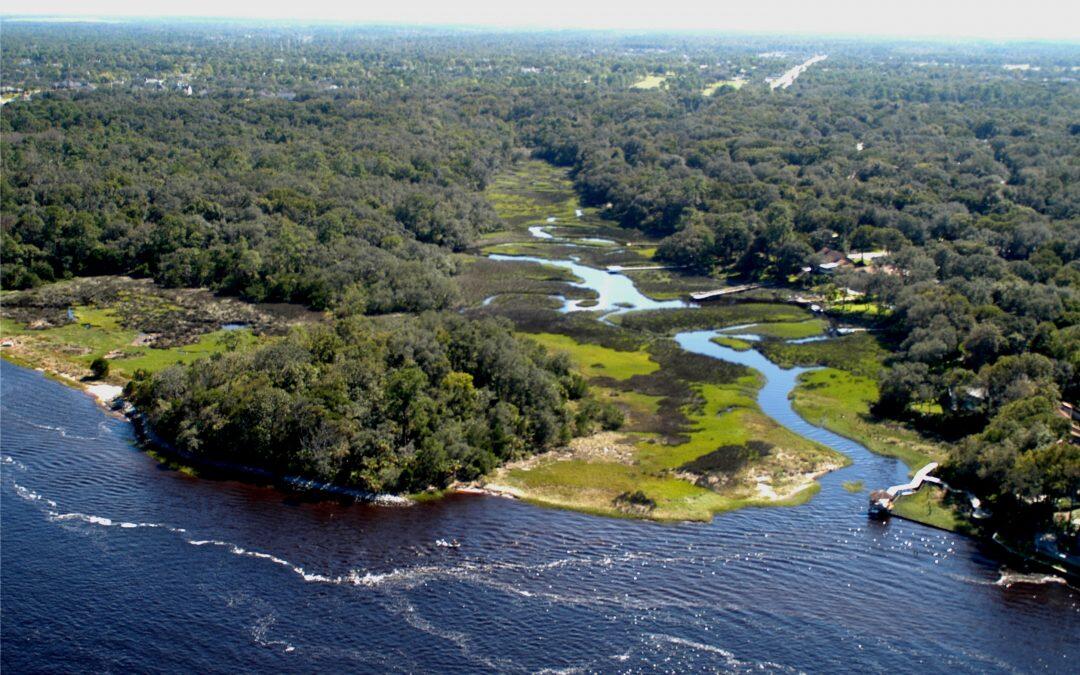With nitrogen levels down and grass beds coming back, but salinity up and algae blooms a vexing problem, the ninth annual State of the River Report on the lower St. Johns River Basin offers mixed results that suggest continued monitoring and research are needed.
“Although nitrogen levels in the main stem continue to decrease, we are still experiencing nuisance algae blooms, and phosphorous remains elevated,” said Dr. Gerard Pinto, research scientist with Jacksonville University. “Air emissions of toxic chemicals continue to decrease, but this is not the case with our waters. In the tributaries, fecal coliform continues to exceed water quality criteria. On a positive note, since monitoring was resumed, grass beds critical to the survival of fish and wildlife grew back significantly.”
New features of the report this year include the debut of an interactive, searchable website at www.sjrreport.com, as well as a Highlight section by guest contributor Geography Professor Ray Oldakowski of Jacksonville University on behaviors and opinions of area residents about the St. Johns River.
Trends from the latest report that show improvement in the river’s health include the lower nitrogen levels, satisfactory amounts of oxygen and a drop in overall air emissions of toxic chemicals in the region. Other indicators remain largely unchanged, such as unsatisfactory levels of phosphorus; high amounts of chlorophyll a, an indicator of harmful algae blooms; fecal coliform levels above water quality criteria in many tributaries; an uncertain future for submerged aquatic vegetation; stable fish stocks; and wetlands being lost to development pressures. In addition to salinity, areas that have worsened include surface water discharges of toxic chemicals, and an increase this year in non-native species to 75 total, with the spread of lionfish and Cuban tree frogs of particular concern.
“This year’s report reveals some improvements, particularly in total nitrogen levels, but salinity is continuing to rise, with the implication of further negative impacts on the ecosystem,” said Dr. Radha Pyati, chemistry professor and chair of the Department of Chemistry at the University of North Florida.
A bright spot this year is the highest manatee count recorded in 22 years, Pinto noted. Numbers in local waters counted in aerial surveys surged to the highest single-day counts since studies by Jacksonville University researchers began more than two decades ago, rising 15 percent to 217 over the previous record of 189 in 2012. Pinto attributed much of the rise to stronger state regulations, more boating speed zones, educational outreach and raised awareness.
In the new Highlight section featuring research about behaviors and opinions of area residents regarding the St. Johns River, researchers found that 70 percent of those surveyed had used a water access facility, such as a boat ramp or riverwalk, within the last month, and two-thirds felt that additional water access facilities were needed in Duval County.











